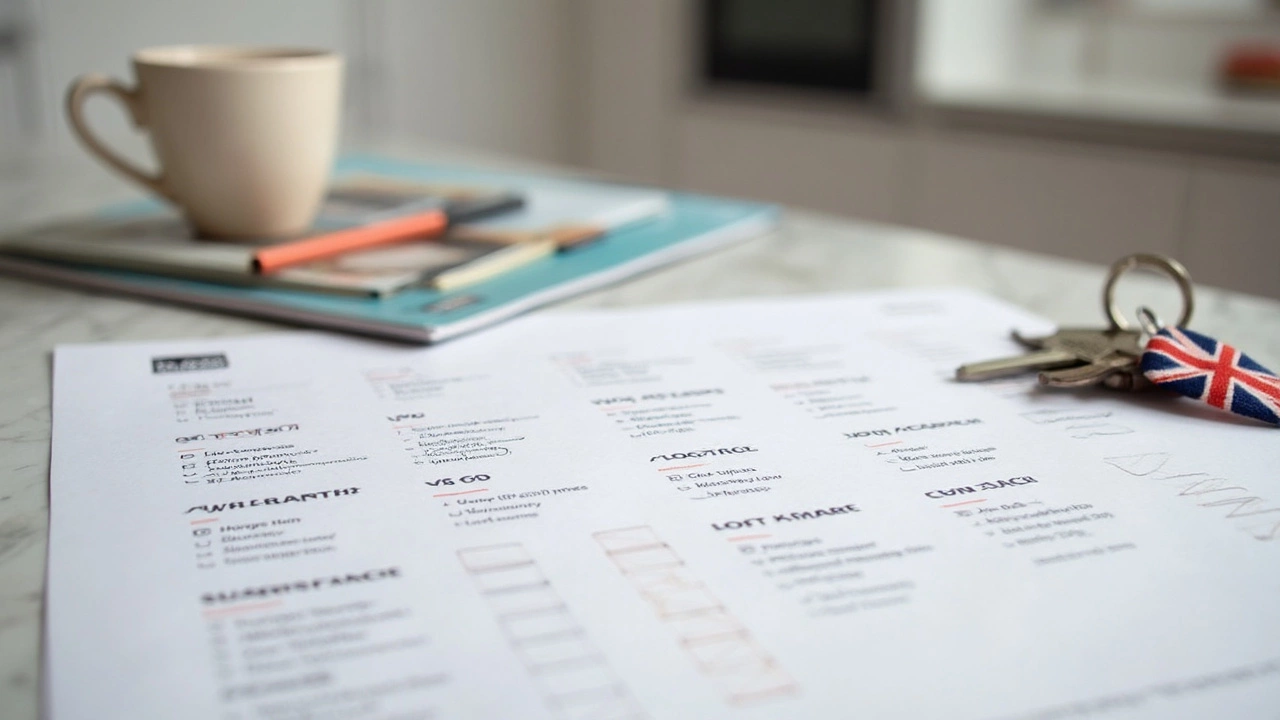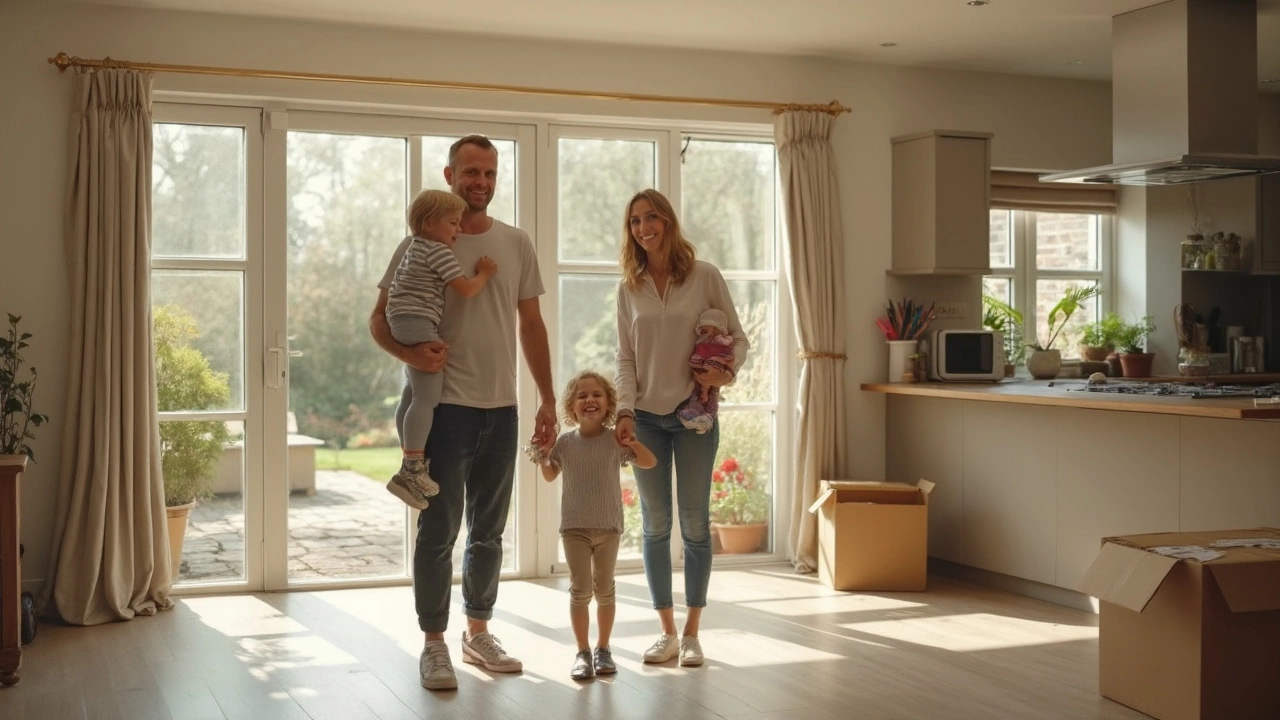If you’re eyeing a freshly built home, you’re probably wondering what actually comes with it. Spoiler: not everything is part of the deal. Lots of folks are shocked when they find out their new place doesn’t have turf in the backyard or light fittings in every room. Builders love to show off those glossy show homes, but some of the nice bits are just for, well… show.
First up, most builders hand over a property that’s technically “move-in ready,” but this usually means a bare minimum finish by default. You’ll get basic walls, flooring, kitchens, bathrooms, and utilities hooked up. But the details? That gets tricky. Some give you fitted wardrobes, others leave empty spaces you need to fill. It’s a lot less obvious than you’d think.
- What’s Standard in a New Build?
- Upgrades and Hidden Extras
- What’s Not Included (But You Might Assume Is)
- Tips for New Build Buyers
What’s Standard in a New Build?
Builders usually include the basics in every new build, but what’s “standard” isn’t always obvious until you see the contract. You’ll get a finished shell that’s ready to live in, but the finishing touches can really vary. Here’s what almost all new homes come with straight out of the box:
- Central heating and hot water: Gas or electric systems, with thermostats installed.
- Double-glazed windows and basic doors (including front and back, often a basic composite or uPVC model).
- Bathrooms with toilets, sinks, and a bathtub or shower (sometimes both in the main bathroom).
- Kitchen units fitted with worktops, cupboards, a sink, and usually an oven and hob—sometimes even a fridge or washing machine, but that depends on the developer.
- Basic flooring in wet areas (kitchen and bathrooms). Some give you carpets or laminate everywhere, others leave bedrooms and lounge “flooring ready.”
- Socket outlets and lighting points in each room, with blank pendant fittings—don’t expect the trendy lighting from the show home.
A lot of buyers are surprised by what new builds include as standard and what they leave out. Take a look at this handy table showing what you’ll usually get—and what you won’t—in the average UK new build as of 2025:
| Feature | Normally Included? |
|---|---|
| Central Heating | Yes |
| Internal Doors | Yes |
| Fully Fitted Kitchen | Usually |
| Kitchen Appliances (Fridge/Freezer, Washer) | Sometimes |
| Basic Flooring Everywhere | Usually in wet rooms, not always elsewhere |
| Bathroom Fixtures | Yes |
| Lighting Fixtures | No, just bulbless pendants |
| Turfed Rear Garden | Rarely |
| Turfed Front Garden | Sometimes |
| Fitted Wardrobes | Rarely |
Before signing anything, ask your builder or agent for a full “specification list.” Get it in writing, because sales advisors can be a bit optimistic when they talk through site tours. It’s a smart move to do a walk-through checklist right before you complete; note anything missing or different from what was promised. If you’re not sure about something, just ask—they’re used to these questions, and you don’t want any expensive surprises after you move in.
Upgrades and Hidden Extras
This is where new builds get confusing. Sure, you get a house, but much of what makes it comfortable or stylish doesn’t come standard. Builders offer a menu of upgrades—some are worth the cash, others should make you think twice.
Let’s break it down. The starting price gives you the essentials, but if you want things like better kitchen counters, fancy tiles, or integrated appliances, those are upgrades. Flooring and lighting can be standard or extra depending on the builder and package. Some charge for fitted wardrobes, better carpeting, garden turf, or even for painting interior walls a color that isn’t white.
Watch out for these common add-ons:
- Higher-end kitchen units (granite worktops, soft-close cabinets)
- Upgraded bathroom fittings (rainfall showerheads, heated towel rails)
- Spotlights or bespoke lighting rather than a simple bulb holder
- Garden landscaping, patios, or fencing beyond the basic boundary
- Extra sockets or USB plug points
- Built-in wardrobes or extra storage
The price for these extras runs high. According to a 2024 survey of UK homebuyers, people who picked lots of builder upgrades spent between £12,000 and £25,000 above the list price. Sometimes, it’s actually cheaper to go for standard finishes and do upgrades yourself after you move in. Just be aware, the builder’s warranty usually only covers their work, so outside contractors might mean less coverage.
| Common Upgrade | Average Builder Cost |
|---|---|
| Granite worktops | £2,000–£3,500 |
| Integrated appliances | £2,500–£5,000 |
| Landscaped garden | £3,000–£7,500 |
| Extra power sockets | £300–£700 |
The real kicker: even basics like lawn, fencing, or simple tiling might cost extra. The important thing is to ask your sales rep for a full breakdown, in writing, so you know exactly what you’re paying for when buying new builds. If you choose upgrades, check if they add resale value or just look good now. Sometimes, dodging upgrades and saving your cash works out better in the long run.

What’s Not Included (But You Might Assume Is)
This is where new build buyers get caught out the most. It’s easy to think you’ll walk into your new place and everything will be shiny, finished, and ready for you to relax. The catch? Some real basics aren’t actually included as standard and you’ll need to budget for them.
Let’s break down the usual stuff you might expect but won’t find in most new builds:
- Garden landscaping: You’re usually getting turf in the front, but the back gets left as a patch of earth. Sometimes it’s just bare mud or even builder’s rubble under a layer of topsoil. Fencing and patio slabs might only be “optional extras.”
- Flooring upgrades: Sure, you’ll get floors, but don’t expect those glossy tiles or luxury carpets from showhomes. Often it’s basic vinyl or carpet that you’ll want to swap out if you care about style, or sometimes, just concrete in certain rooms like garages and utility areas.
- Light fittings and fixtures: The property often only has basic bulb holders dangling from the ceiling. Fancy lighting, recessed LEDs, or even basic lampshades are add-ons. The same goes for curtain poles or blinds—prepare for a shopping list.
- Appliances: Standard-issue kitchens might come with an oven and hob, but integrated fridges, dishwashers, or washing machines usually aren’t included unless you pay extra. Laundry rooms? Empty space until you buy your machines.
- Bathroom accessories: Think about towel rails, mirrors, and toilet roll holders. These are usually missing in action—plan to buy and fit them yourself.
- Technology: Alarm systems, smart home gadgets, outdoor sockets, and fast-charging plugs are almost always extras you’ll want to add later.
A few more sneaky ones: loft ladders, fitted wardrobes, and even TV aerials are often absent in standard price tags. Some buyers get a surprise when they find out there’s no grass for their dog or nowhere to plug in the TV until they sort it themselves.
Here’s a tip: Always check the specification sheet, not just the glossy brochure. Make a list of what’s included in your exact plot, not just what you saw in the showroom. This helps you plan your budget, avoid disappointment, and cuts the shock factor on handover day.
Tips for New Build Buyers
You want to avoid those classic new build surprises? Here’s what you need to do before signing anything or handing over cash.
- Read the spec sheet, line by line. It’s not just paperwork. That sheet spells out exactly what you get—from kitchen worktops to the brand of taps. Ask for details on flooring, garden landscaping, and even smaller bits like light sockets. If it isn’t listed, you probably aren’t getting it.
- Push the builder for a snagging survey—or do your own. Don’t rely on their promise that “everything’s perfect.” Professional snagging inspectors know where problems hide, like uneven floors or missing insulation. If you find problems, get them fixed before you fully move in, not after.
- Check warranties and guarantees. Most UK new builds, for example, come with a 10-year NHBC Buildmark warranty, but the cover in the first two years is much broader than in years 3 to 10. Know exactly what counts as a defect and how quickly fixes happen.
- Pin down completion dates, but expect delays. Builders tend to be optimistic about deadlines. Agree on penalty clauses in case they overrun and find out what happens if your moving date gets pushed.
- Look out for hidden costs. Fencing, garden turf, appliances, even curtain rails—these can be extras. Ask for a full price list and resist the sales pitch for upgrades you don’t actually want or need.
- Talk to residents. If you can, chat with anyone already living in the development. They’ll tell you what came standard, what they had to sort themselves, and warn you about the builder’s after-sales support.
- Check for management fees. Many new builds on estates or with shared spaces come with monthly charges. Make sure you know how much they are, what they cover, and if they can rise in the future.
Still got questions about new builds? Never assume what you see in the marketing materials is what you’ll actually get. Document everything—emails, plans, even WhatsApp text chains with the sales office. Even a simple paper trail can save you big headaches later on.
